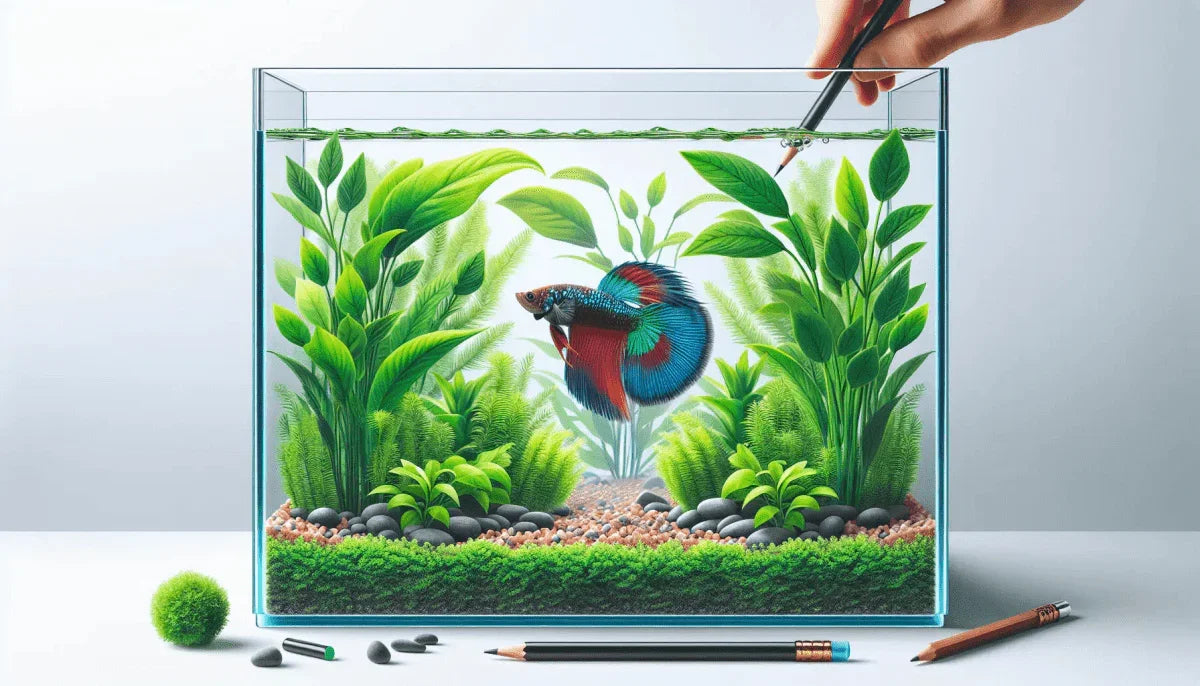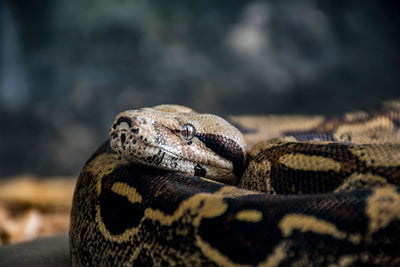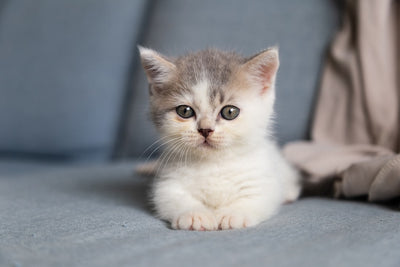Is a 3 Gallon Tank Ideal for Betta Fish?

Betta fish captivate with their vibrant colors and dynamic fins, rising as one of the most sought-after pets for aquarists. Their care, specifically the size of their dwelling, sparks debate among enthusiasts. A key concern surfaces: does a 3-gallon tank provide a habitat where betta fish can thrive? Addressing the essentials for health and happiness, this article examines if such a compact environment aligns with the needs of these spirited swimmers.
Understanding Betta Fish Requirements
Betta fish, with their vivid colors and elegant fins, are native to the shallow waters of rice paddies, ponds, and slow-moving streams in Southeast Asia. This environment is characterized by warm, oxygen-rich waters with plenty of space for these solitary fish to establish their territories. Understanding the natural habitat of betta fish is key to replicating conditions that meet their space requirements in captivity.
Space is not just a luxury for betta fish; it's a critical component of their well-being. In the wild, bettas have the freedom to swim and explore a vast area, which promotes healthy physical development and stimulates their active minds. Confinement in a cramped space can lead to a myriad of issues, including stress, aggression, and a weakened immune system. Adequate space allows for better water quality and more stable water parameters, both of which are essential for maintaining the health of betta fish.
Considering their territorial nature, bettas thrive when they can claim an area as their own. An ideal tank setup would include ample room for swimming, as well as hiding spots and enrichment elements that mimic their natural environment. The importance of space for betta fish cannot be overstated—it supports their physical health by allowing for proper exercise and their mental health by providing a stimulating environment that reduces stress and boredom.
When choosing a tank for a betta fish, it is essential to keep in mind not only the size but also the quality of the environment it will create. This insight into the natural needs of betta fish serves as a foundation for the ongoing discussion about whether a 3-gallon tank can suffice for these vibrant creatures.
The Debate Over Tank Size
When it comes to housing betta fish, one of the most vigorously debated topics among enthusiasts and experts alike is the ideal size of their aquatic abode. At the heart of this debate is the question of how much space these vibrant fish need not just to survive, but to thrive.
Many believe that a betta's tank should be a palatial estate, with ample room to explore and exhibit natural behaviors. They argue that larger tanks allow for better water quality and stability, which are crucial to the health of betta fish. Moreover, spacious environments are thought to reduce stress and prevent the behavioral issues that can arise in confined spaces.
On the flip side, some aquarists maintain that betta fish can live comfortably in more modest accommodations. They posit that with diligent care and regular maintenance, a betta fish in a 3-gallon tank can lead a full and happy life. Proponents of smaller tanks often highlight the convenience and space-saving benefits, which can be particularly appealing to those with limited living space.
Despite the differing opinions, there is a common thread that emerges from the top search results: a consensus regarding the minimum recommended tank size. The prevailing wisdom suggests that while betta fish can survive in smaller environments, they are more likely to flourish in tanks that offer more room to roam. This aligns with a fundamental principle of pet care, which is to replicate an animal's natural habitat as closely as possible to ensure its well-being.
As betta enthusiasts continue to weigh the merits of various tank sizes, it becomes clear that the debate is not just about gallons and dimensions. It's about understanding the needs of these fascinating fish and creating an environment where they can not only live but also display the full spectrum of their natural behaviors and beauty.
Is a 3 Gallon Tank Enough?
When considering the appropriate habitat for betta fish, the size of the tank often takes center stage in the discussion. A 3-gallon tank, often seen as a compact option, comes with its set of advantages and challenges. The primary benefit lies in its convenience and suitability for small living spaces, making it a tempting choice for betta enthusiasts with limited room.
However, the spatial limitations of such a small environment cannot be overlooked. Betta fish, with their vibrant fins and active nature, require space to swim and explore. In the confines of a 3-gallon tank, their ability to exhibit natural behaviors may be significantly hindered. This restriction can lead to stress, which in turn may manifest in health issues such as fin rot or a weakened immune system. The limited water volume in a smaller tank also means that toxins can build up more quickly, requiring diligent monitoring and more frequent water changes to maintain water quality.
It's important to recognize that while a 3-gallon tank can sustain a betta fish, it may not provide the enriched and spacious environment that would allow the fish to thrive. Owners must weigh the convenience of a small tank against the potential impact on their betta's well-being, considering the long-term commitment to creating a healthy and stimulating home for their aquatic companion.
Considerations for a Healthy Betta Environment
Creating a nurturing habitat for betta fish is not just a matter of filling a tank with water and introducing the fish. Essential elements such as filtration, heating, and decorations play a pivotal role in the overall health and happiness of these vibrant creatures. Each component contributes to replicating the natural conditions betta fish thrive in, and thus requires careful consideration, especially when working with the spatial constraints of a 3-gallon tank.
Let's delve into the intricacies of these vital elements. Filtration, for starters, is indispensable in maintaining water quality and clarity. It rids the tank of harmful toxins and ensures a stable environment for your betta. However, the limited water volume in a 3-gallon tank can pose a challenge. Filters appropriate for small tanks must be chosen wisely to prevent strong currents that can stress the betta, who prefer calm waters.
Next is heating. Betta fish are tropical beings, accustomed to warm waters. A consistent and suitable temperature range is critical to their well-being. The small water volume of a 3-gallon tank can rapidly fluctuate in temperature, which means heaters must be monitored closely to maintain a constant and gentle warmth that betta fish necessitate for their health.
Lastly, decorations are more than mere aesthetics; they provide essential hiding spaces and barriers that allow betta fish to exhibit natural behaviors. However, the limited space in a 3-gallon tank can quickly become crowded, leaving inadequate room for swimming. Selecting the right decorations that enrich the betta's environment without compromising their free movement is key.
In conclusion, while a 3-gallon tank can be made into a home for betta fish, it demands an elevated level of care to sustain the key elements that constitute a healthy and stimulating environment. It is imperative for betta owners to recognize these challenges and address them with diligence and understanding.
Alternatives to a 3 Gallon Tank
While a 3-gallon tank might seem like a suitable environment for betta fish to some, it's essential to explore the idea of providing a more spacious habitat for these vibrant creatures. Enter the realm of larger tanks, where the biOrb LIFE 15 Aquarium with Standard Light 4-gallon emerges as an exemplary alternative. This thoughtfully designed aquarium offers a myriad of benefits, serving as a superior haven for betta fish.
A slightly larger environment, such as that provided by the biOrb LIFE 15, can significantly enhance the quality of life for betta fish. The additional space affords more room for swimming, which is not just a physical activity but a vital aspect of a betta fish's psychological well-being. Ample swimming space can lead to a more active and healthier betta, as it mimics the expansive rice paddies of their natural habitat.
Moreover, the biOrb LIFE 15 Aquarium doesn't only offer more space but also incorporates advanced features that facilitate a healthier and cleaner environment. The larger volume of water in a 4-gallon tank dilutes toxins more effectively, making it easier to maintain a stable water chemistry, crucial for the sensitive betta fish. The integrated filtration system ensures that the water remains pristine, providing a stress-free lifestyle for your aquatic companion.
Adopting a larger tank like the biOrb LIFE 15 also opens up new possibilities for aquascaping. Enthusiasts can create a visually appealing and enriching environment with plants and decorations, which serve as hiding spots and territorial landmarks for betta fish. Such an environment can significantly reduce stress, leading to a more vibrant and colorful betta.
While the initial investment in a larger tank may be slightly higher, the long-term benefits for your betta's health and happiness are invaluable. Owners are encouraged to consider the advantages of a more spacious and well-equipped tank like the biOrb LIFE 15 Aquarium to ensure their betta fish thrive.
The Role of Tank Setup and Maintenance
When considering the habitat for a betta fish, the significance of a proper tank setup accompanied by diligent maintenance cannot be overstated, even in a 3-gallon tank. This level of care ensures the environment is conducive to the fish's health and happiness. A well-arranged tank with the correct balance of elements can mitigate some of the space limitations associated with smaller aquariums.
Regular water changes stand out as a cornerstone of good aquarium maintenance. They are essential in preventing the buildup of harmful substances, such as ammonia and nitrites, which are particularly concentrated in smaller volumes of water. With a consistent schedule, these changes keep the water quality pristine, thereby providing a stable environment that supports the well-being of betta fish.
Monitoring water parameters goes hand in hand with water changes. Frequent testing for pH levels, ammonia, nitrite, and nitrate levels is imperative to prevent and address potential issues promptly. This careful observation and adjustment of water chemistry are especially critical in a smaller tank where fluctuations can occur rapidly and have more pronounced effects on the delicate ecosystem within.
Providing enrichment is another aspect that bolsters the suitability of a 3-gallon tank. Enrichment can come in various forms, such as live plants, which not only enhance the aesthetic of the tank but also offer hiding places and reduce stress for the betta. A thoughtfully decorated tank also stimulates the betta's mind, encouraging natural behaviors and contributing to overall health.
Ultimately, while a 3-gallon tank presents challenges, attentive setup and maintenance can significantly improve its potential as a home for betta fish. By concentrating on these aspects, owners can create a nurturing, enriched environment that approximates the conditions betta fish would encounter in the wild.
Expert Opinions on Betta Fish Care
When delving into the world of betta fish care, the insights of aquatic experts shine a light on the path to ensuring a thriving environment for these vibrant creatures. A consensus among specialists underscores the critical nature of adequate tank size for the well-being of betta fish. Experts advocate that the living space for a betta should not only accommodate its physical activity but also foster its psychological health, which is intrinsically tied to the spatial freedom it experiences.
In the realm of professional care guidelines, there is an emphasis on the need for a habitat that mirrors the complexity and richness of a betta's natural environment. This includes ample space for exploration and the establishment of territory, both of which are compromised in enclosures that are too confined. While opinions on the exact dimensions of an ideal tank may vary, the underlying principle remains steadfast: larger tanks contribute to better health outcomes and enriched behavioral expressions in betta fish.
The dialogue among experts extends beyond simple measurements, touching on the multifaceted nature of a betta's well-being. It is not solely about gallons and dimensions but also about the quality of life that a betta can lead within its aquatic domain. As such, when assessing the ideal conditions for betta care, the wisdom of those who have dedicated their careers to studying these fish provides invaluable guidance for both novice and seasoned betta enthusiasts alike.
Conclusion
Reflecting on the exploration of a betta fish's habitat needs, we recognize the crux of the matter: the suitability of a 3-gallon tank. While some aquarists may argue that a tank of this size can suffice, the broad spectrum of betta care essentials suggests otherwise. It's pivotal to consider each aspect of betta care, from the ample swimming space to the stability of water parameters, when selecting a home for these vibrant creatures.
As we've dissected the various elements that contribute to a flourishing environment for betta fish, it becomes apparent that a larger tank often equates to a happier and healthier betta. A more spacious tank not only facilitates easier maintenance of clean and stable water conditions but also provides the fish with the freedom to exhibit natural behaviors.
In sum, when deliberating over tank size for your betta, let prudence guide you. Remember, a decision that accounts for the full spectrum of your betta's needs will ensure a thriving aquatic companion for years to come.
Better Betta Abodes
As we've explored the various aspects of betta fish care, the significance of providing an ample and enriching environment for your aquatic companion cannot be overstated. A 3-gallon tank may fall short in offering the best quality of life for these vibrant creatures. For those dedicated to the well-being of their betta fish, a larger habitat is worth considering.
The biOrb LIFE 15 Aquarium stands out as a superior alternative, providing that additional space which can make all the difference in fostering a thriving aquatic environment. This carefully designed 4-gallon tank not only enhances the living conditions for your betta but also serves as an elegant addition to your home decor.
Visit Talis US to discover the biOrb LIFE 15 Aquarium and take a step towards enhancing your betta fish's habitat.






